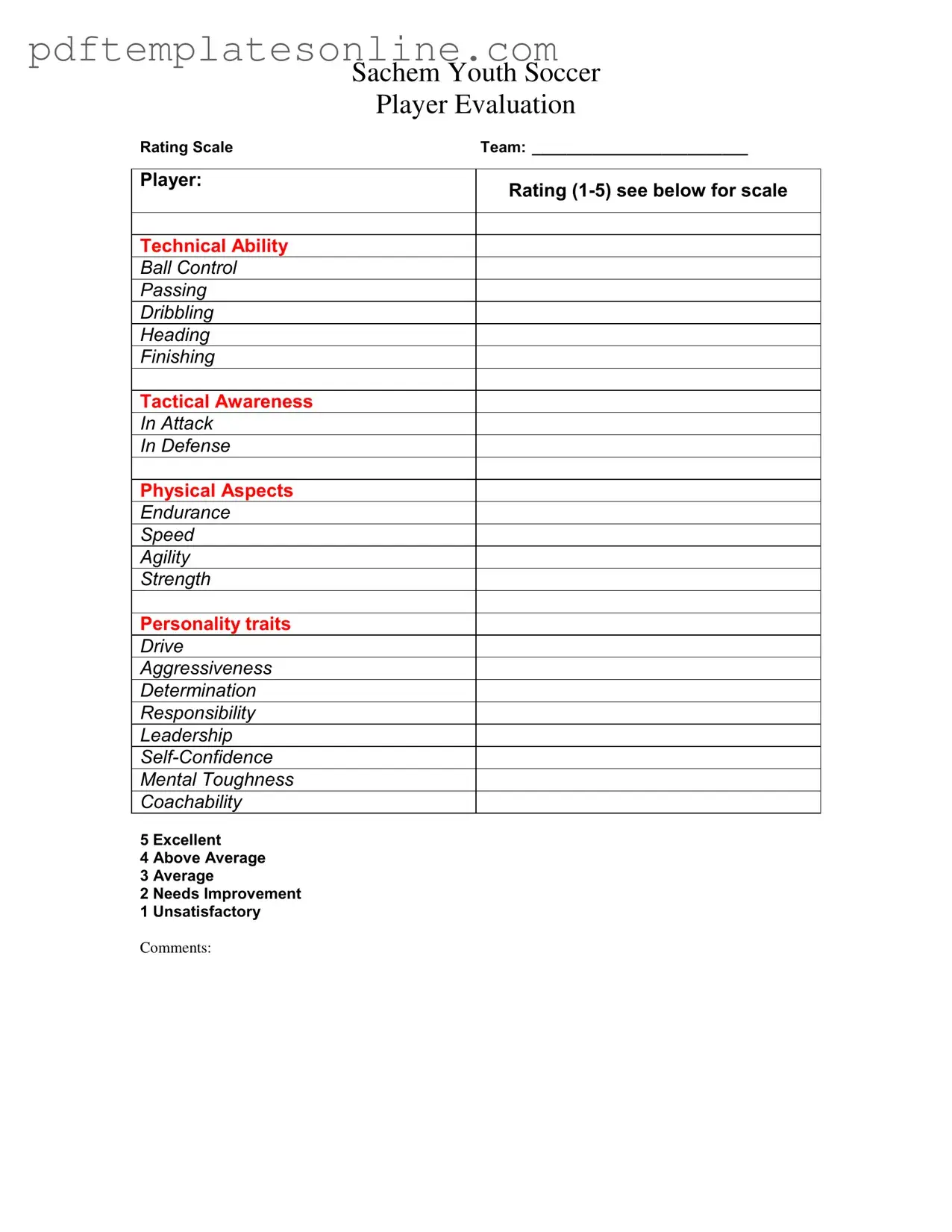Filling out the Soccer Player Evaluation form can be a straightforward process, but many individuals make common mistakes that can affect the accuracy and usefulness of the evaluations. One of the most frequent errors is failing to provide specific examples in the comments section. While a rating is helpful, additional context can greatly enhance the evaluation. For instance, simply stating that a player is "good" at passing does not convey the nuances of their skills. Specific examples of successful passes or situations where they excelled can provide valuable insights.
Another common mistake is neglecting to rate all categories. The evaluation form includes various aspects of a player's performance, such as technical ability, tactical awareness, and personality traits. Skipping sections can lead to an incomplete picture of the player's overall capabilities. Each category is important, and taking the time to assess each one ensures a more comprehensive evaluation.
Some evaluators may also struggle with consistency in ratings. It is essential to apply the rating scale uniformly across all players. If one player receives a "4" for passing while another player with similar skills receives a "2," it creates confusion and undermines the evaluation's reliability. A clear understanding of what each rating signifies can help maintain consistency.
Additionally, evaluators often overlook the importance of considering the player's position. Different positions on the field require different skills. For example, a forward may be rated on finishing and speed, while a defender should be evaluated more on strength and tactical awareness. Failing to take these positional differences into account can lead to misleading evaluations.
Another mistake is not considering the player's growth over time. Evaluators may focus solely on a player's current abilities without acknowledging improvements or setbacks. Recognizing a player's development can provide a more balanced perspective and help coaches understand how to further support their growth.
Some evaluators might also struggle with the subjective nature of personality traits. While traits like determination and leadership are important, they can be interpreted differently by each evaluator. It is helpful to provide specific examples of how a player demonstrated these traits during games or practices. This approach minimizes ambiguity and strengthens the evaluation.
Furthermore, another common error is failing to collaborate with other coaches or evaluators. Gathering multiple perspectives can enrich the evaluation process. Each coach may observe different aspects of a player's performance, and combining these insights can lead to a more rounded assessment.
Another mistake involves not taking the time to review the definitions provided in the evaluation form. Understanding what is meant by terms like "agility" or "mental toughness" is crucial for accurate assessments. Without this understanding, evaluators may misjudge a player's abilities.
Lastly, evaluators sometimes rush through the form, leading to incomplete or inaccurate ratings. Taking the time to reflect on each player's performance can result in a more thoughtful and effective evaluation. A rushed evaluation can overlook key strengths and weaknesses that are essential for player development.
In summary, avoiding these common mistakes can significantly enhance the quality of the Soccer Player Evaluation. By providing specific examples, maintaining consistency, considering positional differences, acknowledging growth, collaborating with others, reviewing definitions, and taking time to reflect, evaluators can create a comprehensive and effective assessment that benefits both players and coaches.
